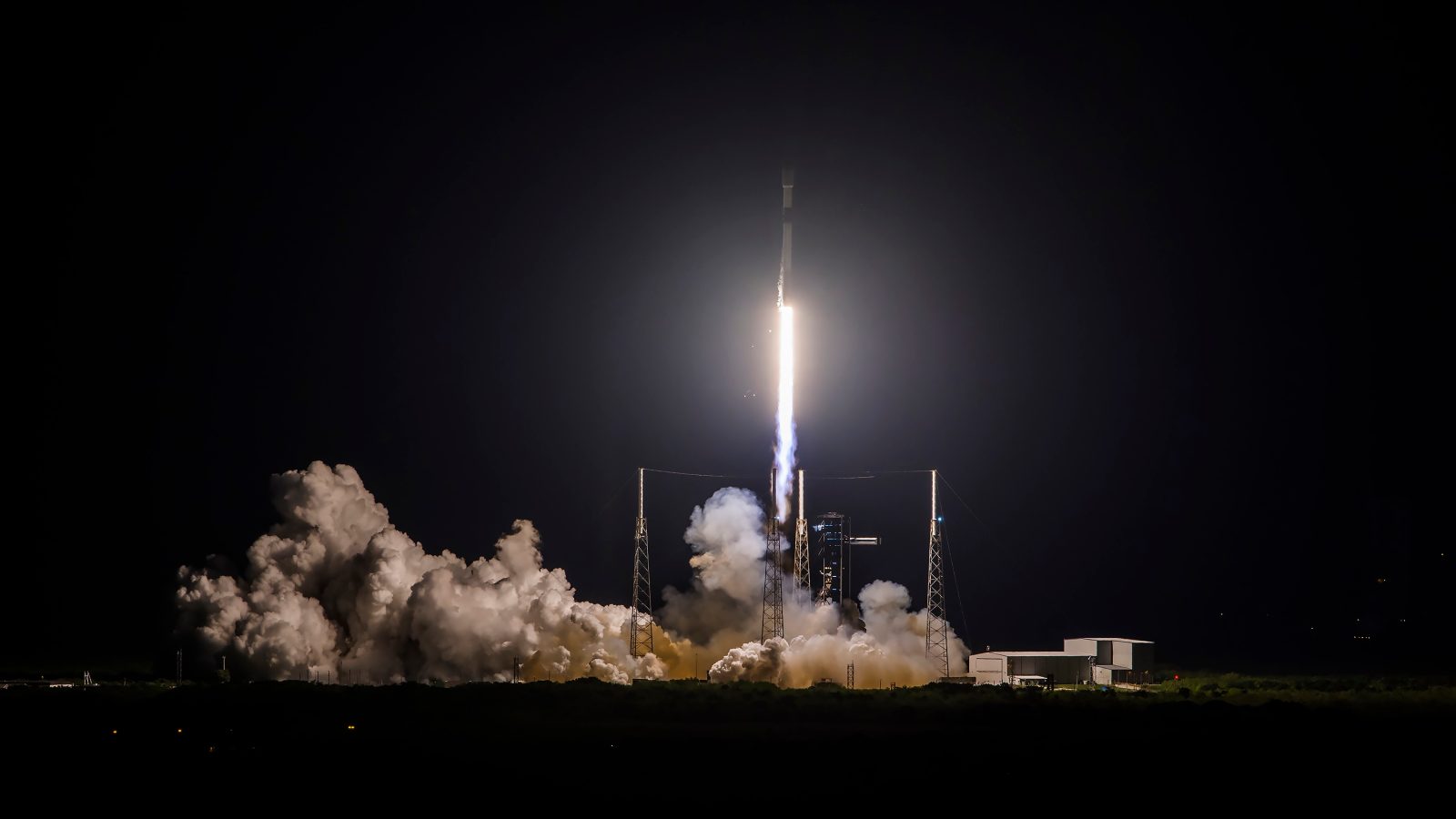
Friday evening SpaceX launched a Starlink mission that while not newsworthy anymore, the booster it launched on was. B1062, first launched in 2020, has now reached the big 20 mission milestone.
Once again we’re at another booster milestone
While it took a bit longer than we expected after the destruction of B1058 on its return to port, SpaceX has hit that 20 mission milestone. Friday evening at 9:40 P.M. from SLC-40, Cape Canaveral Space Force Station, Florida, SpaceX launched B1062 with 23 Starlink Gen 2 mini satellites on top.
B1062 first lifted off on November 5, 2020 with GPS III SV04 “Sacagawea.” Since then it has flown 13 Starlink missions (including the one from last night), eight astronauts, and various other commercial payloads, including Starlink’s competitor OneWeb. Bring it to a grand total of 20 flights, once the believed limit of Falcon 9 boosters.
List of B1062 flights
- GPS III SV04 “Sacagawea” – November 5, 2020
- GPS III SV05 “Neil Armstrong” – June 17, 2021
- Inspiration 4 – September 16, 2021
- Starlink Group 4-5 – January 6, 2022
- Axiom-1 – April 8, 2022
- Starlink Group 4-16 – April 29, 2022
- Nilesat-301 – June 8, 2022
- Starlink Group 4-25 – July 24, 2022
- Starlink Group 4-27 – August 19, 2022
- Starlink Group 4-36 – October 20, 2022
- Starlink Group 5-1 – December 28, 2022
- Starlink Group 5-4 – February 12, 2023
- OneWeb #17 – March 9, 2023
- ArabSat 7B – May, 27, 2023
- Starlink Group 6-7 – July 28, 2023
- Starlink Group 6-23 – October 18, 2023
- Starlink Group 6-30 – November 28, 2023
- Starlink Group 6-38 – January 29, 2024
- Starlink Group 6-44 – March 16, 2024
- Starlink Group 6-49 – April 12, 2024
The booster performed like it came right out the SpaceX factory in Hawthorne. B1062, lofted its second stage and Starlink satellites on their intended trajectory before returning for a perfect landing on droneship A Shortfall of Gravitas.
Join our Discord Server: Join the community with forums and chatrooms about space!
Falcon 9’s limits might just be Starship
When SpaceX first began reusing its first stage, many didn’t think it was even possible. When it became possible, the hypothetical limits by Elon Musk was close to 10 or 15 launches. That was also at the time believed to be a big ask.
SpaceX is no longer advertising potential limits to how many times they can refly a booster before seeing any failures. There will be limits, and SpaceX intends to find them but don’t have an idea as to when they’ll show up.
Each booster goes through a rigorous refurbishment process before reflight. However, those process have come down in time it takes to finish, some boosters reflying in a matter of weeks. It’s possible teams have already spotted failing points before flight and those booster see longer refurbishments but that’s something we’ll probably never hear about.
The knowledge gained with reusing Falcon is important for the company’s new rocket, Starship. SpaceX hopes to launch Starship rockets on a near hourly bases, meaning those boosters and ships will quickly replace Falcon boosters in reflight records.
Starship may just be a few more flights away before beginning sending payloads to orbit. This will most likely begin with full size Starlink Gen 2 satellites, likely replacing the mini variations launch on Falcon 9s.
While it might be hard to believe, we could be reaching the conclusion of the Falcon 9’s career (we’re talking years here not months), at least its commercial career. While it’s unknown how many customers will move from Falcons to Starship, the potential low cost for launch could mean the bulk switch over.
So does that mean we’ll never know the limit of Falcon 9 boosters? Unsure, B1062 will probably fly a few more times this year, maybe it’s 21, or 25, or 50. Whatever it is, Starship will most likely be higher.
FTC: We use income earning auto affiliate links. More.


Comments